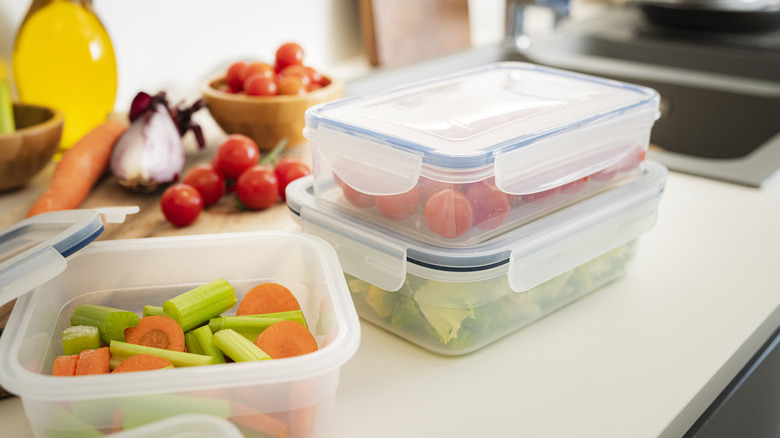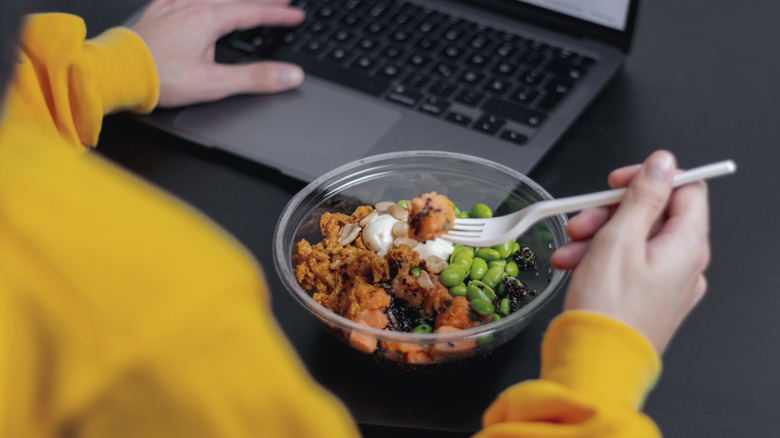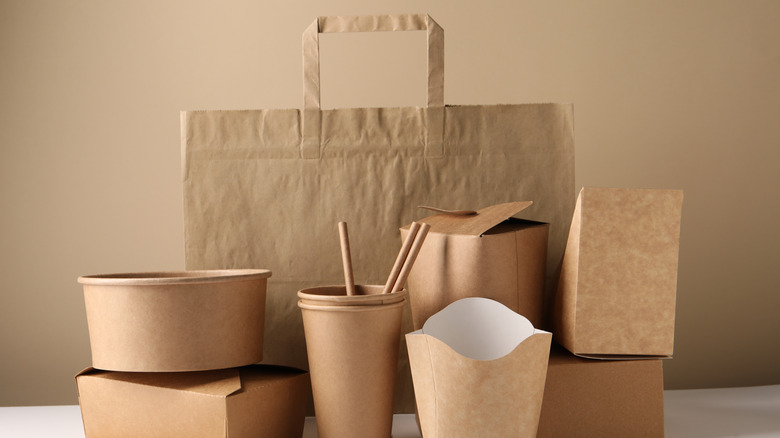Why It May Be Time To Ditch Your Plastic Food Containers For Good
If you look around your kitchen, chances are you'll spot different corners with at least a dozen plastic containers tucked away — one of them probably dedicated to a growing stash of takeout boxes. Tupperware has a fascinating history and has been a pantry mainstay since World War II for good reason. From stashing and reheating leftovers to packing lunches for work or even a sunny afternoon picnic, it's hard to picture daily life without it. And that's not just because of its staying power. Plastic containers are shatter-resistant, super handy, and won't have you coughing up serious cash. But are they actually safe to use? That's where the conversation starts to sizzle. Some, especially those in the plastics industry, feel there's no harm in using them (for obvious reasons). Others argue there just isn't enough reliable data to say for sure. What most folks can get behind, though, is that besides not being nature's bestie, plastic containers aren't winning any awards in the wellness department either, as they contain some problematic compounds. So, cutting back might be the smarter move.
Many of these containers come with a side of phthalates. Phthalates (we understand the struggle with the name) are chemical compounds that are added to boost the durability and flexibility of plastic containers. So, things like cling wrap, shampoo bottles, vinyl shower curtains, and even some kids' toys often carry them. Alarmingly, phthalates have been linked to increased risks of diabetes and obesity. They can also meddle with hormones, throwing fertility off track and speeding up puberty in children.
Plastic containers contain more than one problematic compound
Phthalates are just one of the problematic compounds lurking in plastic containers. Another thing that continues to raise eyebrows is BPA (short for bisphenol A), which is commonly used to make rigid plastics. Think baby bottles, water bottles, and an array of food containers. You've likely noticed more and more bottles sporting a "BPA-free" label these days (often with a slightly higher price tag). Consumers are becoming increasingly alert to the health risks associated with BPA, though many plastic products still contain it. BPA exposure has sparked concern for its potential effects on the brain and prostate gland, particularly in fetuses and young children. It's also been flagged for contributing to changes in children's behavior. And the list doesn't stop there. Growing research points to possible links between BPA and high blood pressure, Type 2 diabetes, and heart disease.
In response to these concerns, the U.S. Food and Drug Administration has acknowledged the risks and banned the use of BPA in baby products like bottles and beakers. However, it is still considered safe for BPA at the low levels found in food packaging. While ditching plastic containers altogether may not be practical overnight, one slight shift that can make a big difference is avoiding heat. If you absolutely need to, always check whether the material is safe for reheating and long-term food storage, especially when reusing takeout containers. That said, it's best to stick to cold storage and steer clear of popping them in the microwave. That's because when containers with BPA, phthalates, or similar chemicals are exposed to heat, those compounds can leach straight into your food.
How to transition to a plastic-free kitchen
Transitioning to a kitchen and a life without plastic containers can take some time, but you can get started with a few small steps. The first, as you might have guessed, is finding alternatives. Glass is an obvious choice. So, repurpose those mason jars lying around your kitchen instead of tossing them out. Bamboo containers are another great option. Sure, they can be a little pricier, but think of it as a one-time investment. They'll last you far longer than plastic containers, which are prone to stains and warping. In case you have some of the old plastic containers sitting around, they're among the first things in your kitchen that should be tossed out sooner rather than later, especially if they've started to make your food smell a little off. Stainless steel is also a smart pick for storing cooked food, though it isn't microwave-safe.
For wrapping up items like cheese, fruit, or sandwiches, beeswax wraps, made with tree resin and oil, are a solid, eco-friendly swap. So are paper bags and containers. And for dry goods, burlap bags are an affordable, sustainable choice. Made with jute fibers, they can also be reused to grow plants, just like veggie sacks repurposed for the garden. With these simple, accessible swaps, you can gradually transition to a plastic-free kitchen and reduce your exposure to harmful compounds. If you're still unsure, start by skipping heat altogether when using plastic containers, and that includes packing hot food.


